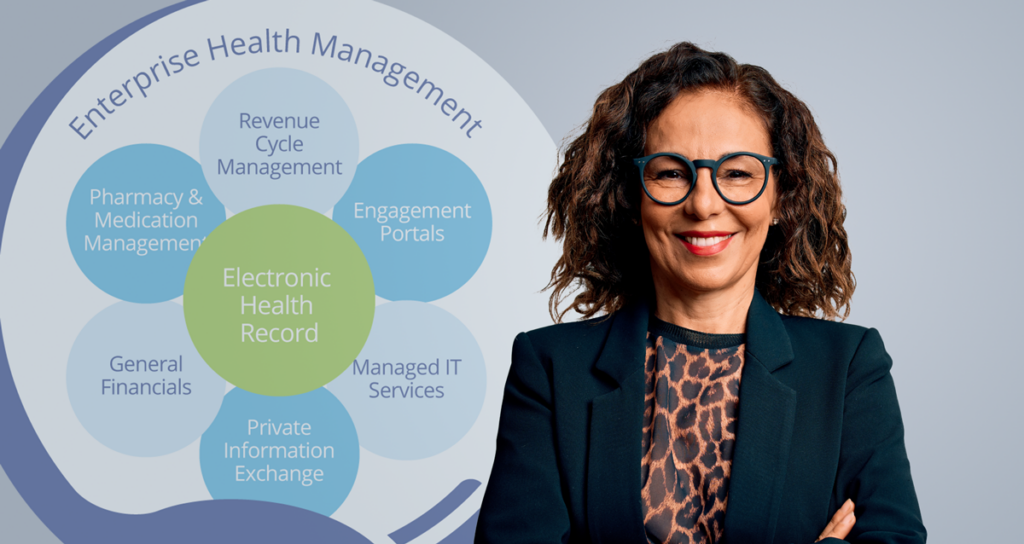Every healthcare organization has priorities to focus on, such as delivering quality treatment, maximizing profits, and improving practice productivity. However, one goal that all providers should share is maintaining their current client base. While many clinicians consider patient acquisitions the primary source of growth, keeping the ones you already have is equally, if not more, important. Recent studies have shown that increasing patient retention rates by 5% can increase profits from 25 to 95%.1
Over the past year and a half, providers have struggled to maintain their retention rates. Today, people (especially late-stage millennials and early Gen Zers) think more like consumers than patients and have plenty more options when shopping around for a new care provider. Therefore, they must think like patients and ask themselves: “what type of experience would I like while receiving care?” For many, it can be measured in convenience, engagement, and results. How easy was it to make an appointment; How involved was I in the care process, and did my health improve from the experience? Below we will discuss what patients today are looking for, how to keep them coming back when they aren’t feeling well, and technology’s role in the process.
Online Scheduling
Patient retention strategies begin with the initial point of contact: scheduling the appointment. They want the ability to book, reschedule, or cancel their appointments online, as it is quicker and more convenient than calling the office and being put on hold.
Quite often, patients make appointments for future dates and forget about them when the date rolls around. Past studies have shown that missed appointments cost the U.S. healthcare system $150B each year.2 When the arrangements are made online through an EHR, it can send both the clinician and the client reminders to prevent no-shows and a loss of revenue.
Reduced Paperwork
Another task patients don’t look forward to is pre-appointment paperwork. In this COVID-infested world, the waiting room can be a dangerous place to spend too much time. Providers should create the option of filling out their information online beforehand to reduce time spent at the facility. This also allows administrative staff more time to get the billing details sorted out, thus speeding up the revenue cycle. In addition, records stored in the EHR are much easier to find than paper files.
Telehealth
To avoid a physical trip to the doctor’s office entirely, providers should offer virtual or telehealth appointments in addition to in-person ones. Some patients are still uncomfortable in a doctor’s office or cannot go due to schedule or transportation restraints. With telehealth, people can continue making dinner, watching their kids, or studying for a class while waiting to see their physician on their own time. Many appointments can be facilitated over a video call, like basic checkups. According to a recent survey, 78% of patients reported they were at least ‘somewhat satisfied with their telehealth experience—42% were ‘extremely satisfied,’ and only 6% were ‘not satisfied’ or ‘extremely dissatisfied’.3
Wearables and remote monitoring tools exemplify how technology can improve convenience, engagement, and outcomes. Wearables can track vital health information such as heart rate, blood pressure, insulin levels, and more. Those devices can connect to patients’ smartphones, so they can continuously monitor their progress. The provider can view this information too.
Easy Access to Records
Amazon comes to mind when you think of businesses that cater to customers’ wants and needs. The tech giant offers free two-day shipping to members and an account where users can efficiently process returns, sell their items, seamlessly contact customer support, and view their order history and tracking information. Patients also expect that kind of experience with their healthcare providers.
Patients today want to be involved in their health, and providing them with 24/7 access to an online portal is a great place to start. Waiting for your doctor to call you back about a test result could be stressful, and requesting a copy of a bill to be faxed over to you is so 2005. Patients can view lab results, billing and insurance information, past medication orders, and more through the portal! In fact, according to a specific survey, 80% of patients say their portal helps them take better care of themselves.4
Whether you want to make, reschedule, or cancel an appointment or have a question about a medication, you can directly message your provider from the portal. This will improve the doctor-patient relationship, which we’ll get more into later in this post. Portals also save staff time by having all their essential information in one location instead of digging through reams of medical files to find relevant data.
Feedback and Satisfaction Surveys
When patients aren’t satisfied with their care, they are likely to search for a new provider. Sending satisfaction surveys after visits is an effective way to gain valuable feedback. Physicians can build their reputation by taking all the negative input from patients and making the necessary changes.
Although not everyone will respond to the survey, many will because it gives them a voice and makes them feel empowered. By addressing these issues, they will see that you are proactive and working towards a better patient experience. It will show that you care about them as people, not just as paychecks. Even if a few people do not stick around, you can prevent others from leaving the practice.
Patient-Provider Relationship
Possibly the most critical aspect of patient retention is the relationship between patient and provider. A 2017 survey from the Council of Accountable Physician Practices found that consumers believe patient-provider relationships are the single most important factor in quality care.5
Patients must trust their doctor, and although 77% of people do, that is still almost a quarter of people who do not.6 Proper communication is vital—make eye contact, educate them about their diagnosis, emphasizing the severity of the issue and the importance of following the treatment plan, and involve them in decision-making.
In many cases, technology is anti-human—it can create hardships and damage relationships. However, that is not quite the case in healthcare. We already discussed how patients could directly message their provider through an online portal and communicate over video chat. When doctors engage clients with these devices, they view them more favorably. In fact, ResMed found that 85% of participants in their survey value their relationship with their physician and believe the use of new technology can aid in easing frustrations and fostering a structured relationship.7
One overlooked aspect of working in medicine is simply being a compassionate human being. Healthcare workers generally become immune to tragedy over time, but you cannot let your patients see that you are unharmed by bad news. A general assessment of care quality and satisfaction surveys showed that 65% of patient satisfaction could be attributed to clinician empathy.5 You might not remember all your patients, but they will undoubtedly remember a doctor who tried their best to make sure they were well treated. Your dedication to safety could change someone’s life and perception of an entire practice or hospital staff.
From a financial, health, and reputation standpoint, patient retention strategies are critical. Many factors can impact a patient’s decision to receive care from you again in the future. The best way to gain new clients is to keep the current ones satisfied; word-of-mouth marketing is the most effective kind there is.
. . . . . . . . . . . . . . . . . . . . . . . . . . . . . . . . . . . . . . . . . . . . . . . . . . . . . . . . . . . . . . . . . . . . . . . . . .
REFERENCES:
- “Strategies for Improving Patient Retention Using Technology.” Providertech, 1 Mar. 2019, https://www.providertech.com/strategies-for-improving-patient-retention-using-technology/.
- Gier, Jamie. “Missed Appointments Cost the U.S. Healthcare System $150B Each Year.” Healthcare Innovation, 26 Apr. 2017, https://www.hcinnovationgroup.com/clinical-it/article/13008175/missed-appointments-cost-the-us-healthcare-system-150b-each-year
- Charleson, Kimberly. “Telehealth Statistics and Trends: A 2021 Report.” The Checkup, 12 Aug. 2021, https://www.singlecare.com/blog/news/telehealth-statistics/.
- Heath, Sara. “4 Patient Engagement Strategies to Improve Patient Retention.” PatientEngagementHIT, 3 Nov. 2016, https://patientengagementhit.com/news/4-patient-engagement-strategies-to-improve-patient-retention.
- Heath, Sara. “3 Key Traits of a Positive Patient-Provider Relationship.” PatientEngagementHIT, 22 Nov. 2017, https://patientengagementhit.com/news/3-key-traits-of-a-positive-patient-provider-relationship.
- Gaines, Kathleen. “Nurses Ranked Most Trusted Profession 19 Years in a Row.” Nurse.org, 19 Jan. 2021, https://nurse.org/articles/nursing-ranked-most-honest-profession/.
- Williams, Megan D. “How Has Technology Advanced the Medical Field and Doctor-Patient Relationships?” Wolters Kluwer, 7 Feb. 2020, https://www.wolterskluwer.com/en/expert-insights/how-has-technology-advanced-the-medical-field-and-doctorpatient-relationships

